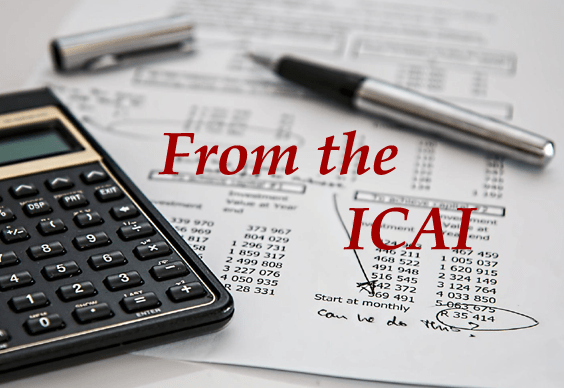Revised Customs duty now closer to Asean average: CBIC Chairman Agarwal
Feb 3, 2025
Sanjay Kumar Agarwal, chairman of the Central Board of Indirect Taxes & Customs (CBIC), spoke to Monika Yadav and Asit Ranjan Mishra in New Delhi about the need to amend rules in the Central Goods and Services Tax Act to overturn the Supreme Court’s (SC’s) order in the Safari Retreats case. Edited excerpts:
Can you explain why the retrospective amendment concerning Safari Retreats was introduced in the Budget when the government has already filed a review petition in the SC?
That was purely a drafting error in the Act. Despite the high court order in the Safari Retreats case, many could have claimed input tax credit, but very few did — so few they can be counted on one hand. There was clarity that it was not admissible. The Council decided on this retrospective amendment, with the Centre and all states, regardless of party, represented. It was a unanimous decision. Nobody opposed it. Everyone felt it should be applied retrospectively, and it had to be done through the Act. If it is not made retrospective, it cannot be challenged further.
A common criticism is that while you are showing reductions in Customs duties, the effective rate has not decreased. What is your response?
I understand the concern. However, we must consider how the world views our duty structure, not just the domestic perspective. There is an average Customs duty calculation based on tariff rates. Before this exercise, it was 11.65 per cent. After the changes, it has come down to 10.66 per cent, bringing us closer to the Association of Southeast Asian Nations (Asean) average.
Countries calculate duty rates this way, and so should we. Items where we reduced duty from 2.5 per cent to nil in the last Budget have now been reflected in the tariff itself, meaning we now record a zero per cent rate instead of 2.5 per cent, improving optics. India does not have high tariff rates overall.
Do you mean to say that the cesses are temporary and will be reviewed?
Yes. The world evaluates Customs duty structures, while cesses are imposed for specific purposes. AIDC, for example, is meant for agriculture and infrastructure development. Stakeholder consultations will determine if and when cesses can be reduced on specific tariff lines — possibly in stages to avoid industry disruption. This has improved the perception of India’s tariff structure.
Could you elaborate on why the powers of the Settlement Commission have been given to the interim board under Customs?
Very few cases were going before the Settlement Commission. Of 98 pending cases, 87 were related to Customs, eight to service tax, and three to sample sizes. The Customs Act already provides for the compounding of offences and has a graded penalty structure based on the stage of payment. Since compounding can offer relief from prosecution and penalties, there was no need for a separate Settlement Commission. The decision was made to do away with it, and pending cases will be handled by interim boards set up in Delhi, Mumbai, Chennai, and Kolkata.
There was a demand for a Customs amnesty scheme. Why was it not introduced?
There was a request, but we found little traction. When we assessed potential applicants, the number was not major. Customs cases often involve linkages to other departments, meaning few cases would fall into this basket.
India is integrating into global value chains, and industries setting up here often import through related parties. These transactions are subject to investigations and provisional assessments, but there was no time limit for finalisation. Cases were dragging on for five to 10 years, which is difficult for businesses needing certainty. We have introduced a two-year time limit for finalisation. This is a major step towards sending a positive signal to businesses setting up in India.
Another key change is the self-revision of the bill of entry. Customs provides over 90 per cent facilitation, meaning bills of entry are not checked unless flagged by the risk system. If an importer later realises an inaccuracy that results in under- or over-payment of duty, they currently need to approach the department for an amendment before making corrections. Now, they can file a declaration and make the additional payment along with interest, without penalty — eliminating departmental interaction. If duty was overpaid, the declaration will itself be treated as a refund application, streamlining the process.
On certain Customs duty items, such as Harley-Davidson motorcycles, the duty has been reduced from 50 per cent to 30 per cent. How much of this is due to the Donald Trump administration’s pressure?
During our rate rationalisation, motorcycles above 1,600 cc were taxed at 50 per cent. We observed that bikes above 1,600 cc are not manufactured in India, whereas those below that threshold are. So, we set a 40 per cent duty on bikes manufactured in India and 30 per cent on those not manufactured here. Harley-Davidson has a plant in India, producing over 10,000 bikes in partnership with Hero MotoCorp. They are not shutting down operations due to this duty change. If they import parts under certain conditions, the duty is 10 per cent, making the total effective rate 30-40 per cent, which remains huge.
Trump made a big issue of this, but these bikes can still be imported at a nil rate from Thailand under the Asean free trade agreement. Last year, Rs 270 crore worth of bikes were imported, Rs 200 crore of which came from Thailand at a nil rate. Only Rs 70 crore worth of bikes were imported from Germany and Japan — hardly any imports overall.
When will the invoice management system be made mandatory?
We are in no rush. We want users to get comfortable with it first. Let things stabilise before making it mandatory.
[The Business Standard]

